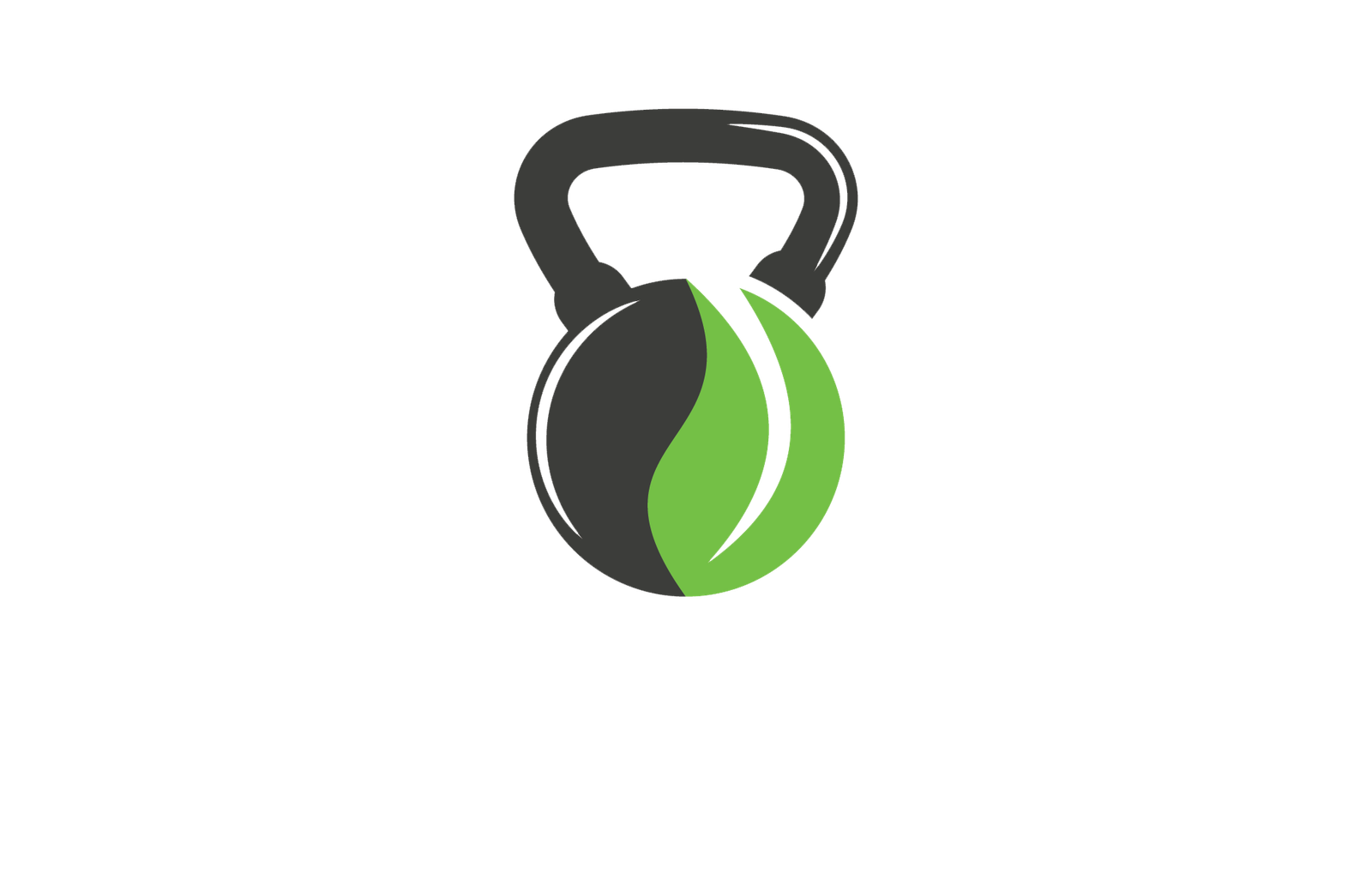Don't miss our holiday offer - 20% OFF!

Advanced Strength Training Programs for Home Workouts
Advanced strength training programs for home workouts require a strategic approach. We incorporate progressive overload principles to facilitate consistent muscle growth and strength gains. Periodized training cycles, consisting of hypertrophy, strength, and power phases, optimize our workouts. Identifying muscle imbalances and selecting the right exercises help us target specific weaknesses. Building a functional home gym, equipped with essential equipment like adjustable dumbbells and Olympic barbells, enables efficient workouts. As we explore plyometric training, nutrition for muscle recovery, and active recovery techniques, we tap our full potential. Let's dive deeper into these strategies to take our fitness journey to the next level.
Key Takeaways
- Incorporate progressive overload principles by gradually increasing weight, reps, or sets over time to facilitate consistent muscle growth and strength gains.
- Periodized training cycles with hypertrophy, strength, and power phases optimize strength training programs and prevent plateaus.
- Identify and address muscle imbalances through muscle testing to target specific weaknesses and reduce the risk of injury.
- Design a functional home gym with space optimization, essential equipment, and aesthetic considerations to motivate regular exercise.
- Set realistic, measurable, and achievable goals with a scheduled workout routine, including rest days, to stay on track and motivated.
Progressive Overload Principles
When designing a strength training program, we must incorporate progressive overload principles to facilitate consistent muscle growth and strength gains, as our muscles adapt to the demands we place on them. This means gradually increasing the intensity of our workouts by adding weight, reps, or sets over time. As we get stronger, our muscles develop muscle memory, allowing us to perform exercises more efficiently and with greater control.
Our training age, or the amount of time we've been consistently training, also plays a vital role in progressive overload. The longer we've been training, the more our bodies adapt to the demands we place on them, and the greater the need for progressive overload to continue making gains. By incorporating progressive overload principles into our strength training program, we can break through plateaus and continue making progress towards our fitness goals. By doing so, we can guarantee consistent muscle growth and strength gains, even for those with a higher training age.
Periodized Training Cycles
As we explore periodized training cycles, we're going to break down the different phases that make up a training cycle. We'll discuss the importance of each phase, from the hypertrophy phase to the strength phase, and how they work together to help us achieve our fitness goals. By understanding these phases and how to incorporate progressive overload methods, we can create a well-structured training program that yields consistent results.
Training Cycle Phases
We divide periodized training cycles into specific phases to optimize our strength training programs. This allows us to create a structured approach to our workouts, ensuring we're consistently challenging ourselves and avoiding plateaus. A typical training cycle consists of three distinct phases: hypertrophy, strength, and power.
During the hypertrophy phase, we focus on building muscle mass through higher-volume training with lighter weights. This phase helps improve muscle endurance and lays the foundation for future strength gains. The strength phase is where we shift our focus to building raw strength, using heavier weights and lower reps to challenge our muscles. Finally, the power phase is all about explosive movements, where we work on generating maximum force in minimal time.
Progressive Overload Methods
Our progressive overload methods within periodized training cycles involve strategically increasing weight, reps, or sets over time to continually challenge our muscles and promote strength gains. This approach guarantees that our muscles are constantly adapting to new demands, preventing plateaus and fostering continued progress. We incorporate various techniques to achieve progressive overload, including micro loads, which involve small incremental increases in weight to challenge our muscles without sacrificing proper form. Another approach we use is daily undulation, where we vary the intensity and volume of our workouts daily to create a fluctuating stimulus that keeps our muscles guessing. By combining these methods, we can create a training program that is both challenging and sustainable, allowing us to make consistent gains in strength and muscle mass over time. By incorporating progressive overload methods into our periodized training cycles, we can take our strength training to the next level and achieve the results we've always wanted.
Exercise Selection Strategies
As we move forward with designing a thorough strength training program, we need to examine exercise selection strategies that address specific goals and needs. To achieve this, we'll focus on identifying muscle imbalances and implementing progressive overload methods. By doing so, we can create a well-rounded program that targets specific weaknesses and optimizes overall strength gains.
Muscle Imbalance Identification
Identifying muscle imbalances is a pivotal step in designing effective strength training programs, since these imbalances can lead to poor posture, decreased athletic performance, and increased risk of injury. As we develop our strength training programs, we must prioritize muscle imbalance identification to guarantee we're targeting the right muscles and avoiding potential problems.
Muscle testing is a fundamental aspect of identifying imbalances. By evaluating the strength and flexibility of specific muscle groups, we can pinpoint areas that require extra attention. For instance, if we find that our shoulders are tight and weak, we can incorporate exercises that target the rotator cuff muscles to improve posture and reduce the risk of injury.
Injury prediction is another key benefit of muscle imbalance identification. By identifying areas of weakness or imbalance, we can take proactive steps to prevent injuries before they occur. For example, if we notice that our quadriceps are substantially stronger than our hamstrings, we can adjust our training program to focus on hamstring strengthening exercises, reducing our risk of knee injuries. By incorporating muscle imbalance identification into our strength training programs, we can optimize our workouts, improve performance, and reduce the risk of injury.
Progressive Overload Methods
By incorporating progressive overload methods into our strength training programs, we can strategically increase the intensity of our workouts to drive continued progress and muscle growth. This involves gradually increasing the weight, resistance, or reps over time to challenge our muscles and stimulate growth. One effective way to achieve progressive overload is through micro progressions. We can do this by making small increments in weight, such as 2.5-5lbs, every two to four weeks, or as soon as we feel we can handle more. Another approach is to manipulate load vectors, which involves changing the direction or angle of the weight to target different muscle fibers. For example, switching from a traditional bench press to an incline bench press targets the upper chest muscles. By incorporating these progressive overload methods into our workout routines, we can facilitate continued progress and muscle growth over time. By pushing ourselves to new heights, we can achieve the results we desire and take our strength training to the next level.
Building a Home Gym
We're taking the first step towards fitness independence by creating a dedicated space in our homes, where we can work out comfortably and efficiently. Building a home gym is an exciting milestone, and it starts with designing a functional and inviting space. Gym aesthetics play a significant role in motivating us to exercise regularly. We can choose a color scheme that energizes us, add some inspirational quotes, or hang a few fitness-related posters to create a motivating environment.
Space optimization is vital when building a home gym, especially if we have limited square footage. We should measure our available space carefully and plan our equipment layout accordingly. Consider a multi-functional design, where we can perform various exercises in a compact area. For instance, a foldable bench can serve as a squat rack, bench press, and even a storage unit. By optimizing our space, we can fit in all the essential equipment without feeling cramped or claustrophobic. With a well-designed home gym, we'll be more inclined to work out regularly, and that's a significant step towards achieving our fitness goals.
Essential Equipment Needs
As we move forward with our strength training program, we'll need to examine the essential equipment that will help us achieve our fitness goals. Fortunately, we don't need to break the bank or overcrowd our home gym with unnecessary machinery. Instead, we'll focus on the must-haves, including dumbbells and barbells, as well as resistance bands, which will provide us with a solid foundation for a well-rounded workout routine.
Dumbbells and Barbells
Selecting the right dumbbells and barbells is essential for a well-rounded strength training program, as they provide the versatility and range of motion needed to target different muscle groups effectively. We have a range of options to choose from, including adjustable dumbbells, fixed dumbbells, and Olympic barbells.
| Dumbbell Type | Benefits | Weight Variations |
|---|---|---|
| Adjustable Dumbbells | Space-saving, cost-effective | 5-50 lbs |
| Fixed Dumbbells | Durable, affordable | 5-100 lbs |
| Olympic Barbells | Ideal for heavy lifting, precision weight increments | 45-300 lbs |
When choosing dumbbells, we should consider grip styles, such as neutral grip, pronated grip, or supinated grip. We should also prioritize equipment maintenance, regularly inspecting and cleaning our dumbbells to ensure longevity. By selecting the right dumbbells and barbells, we can ensure a comprehensive and effective strength training program that targets all major muscle groups.
Resistance Bands
Adding resistance bands to our strength training arsenal provides a versatile and portable way to challenge our muscles and enhance overall fitness. These lightweight and compact tools allow us to work out anywhere, anytime, making them perfect for portable workouts. With a variety of resistance levels and band types, we can customize our workouts to target specific muscle groups and achieve our fitness goals.
When it comes to band variety, we're spoiled for choice. Here are just a few benefits of incorporating resistance bands into our strength training routine:
- Multiple resistance levels: From light to heavy, we can adjust the resistance to suit our fitness level.
- Space-saving design: Resistance bands take up minimal space, making them perfect for home workouts or travel.
- Cost-effective: Compared to traditional gym equipment, resistance bands are an affordable investment.
- Full-body workout: We can target every major muscle group with a variety of exercises and movements.
Creating a Workout Schedule
We'll begin by identifying our availability and scheduling our strength training workouts for the week, ensuring we can realistically commit to our program. Effective time management is essential in building a consistent routine. By setting specific days and times for our workouts, we can create a habit that will help us stay on track. This, in turn, will aid in goal setting, as we'll be able to plan our workouts around our schedule.
| Day | Workout Type | Time |
|---|---|---|
| Mon | Upper Body | 7:00 am |
| Tue | Lower Body | 7:00 am |
| Wed | Rest Day | – |
| Thu | Core | 7:00 am |
| Fri | Cardio | 7:00 am |
Setting Realistic Goals
By establishing realistic goals, we set ourselves up for success, as they provide a clear direction and motivation that aligns with our available time and capabilities. This mindful goal-setting approach helps us avoid unrealistic expectations and guarantees we're working towards achievable milestones. When we set realistic goals, we're more likely to stay motivated and committed to our strength training program.
Some key considerations for setting realistic goals:
- Specificity: Define specific, measurable goals, such as increasing our squat by 20 pounds in 6 weeks.
- Time-bound: Set deadlines for achieving our goals, facilitating we stay on track and motivated.
- Progress tracking: Regularly track our progress, making adjustments as needed to stay on course.
- Flexibility: Be prepared to adjust our goals as our fitness journey evolves and our priorities change.
Warm-Up and Cool-Down Routines
As we move forward with our strength training programs, we recognize the importance of preparing our bodies for exercise and recovering afterwards. A thoughtful warm-up and cool-down routine can make all the difference in preventing injuries and achieving our fitness goals. Let's explore the key components of these routines, including dynamic stretching exercises and post-workout relaxation techniques, to optimize our strength training regimens.
Dynamic Stretching Exercises
When designing a strength training program, incorporating dynamic stretching exercises into our warm-up and cool-down routines is essential for optimizing performance and reducing the risk of injury. By incorporating dynamic stretches, we can increase our mobility gains and debunk common flexibility myths. Dynamic stretching exercises, such as leg swings, arm circles, and hip openers, prepare our muscles for intense exercise and reduce the risk of injury.
Here are some key benefits of incorporating dynamic stretching exercises into our warm-up and cool-down routines:
- Improved flexibility: Dynamic stretching exercises help increase our range of motion and reduce stiffness.
- Injury prevention: By increasing blood flow and reducing muscle tension, we can reduce the risk of injury and improve overall performance.
- Enhanced athletic performance: Dynamic stretching exercises can improve power, speed, and agility, making us more efficient and effective in our workouts.
- Reduced muscle soreness: By incorporating dynamic stretching exercises into our cool-down routines, we can reduce muscle soreness and improve overall recovery.
Post-Workout Relaxation Techniques
We prioritize post-workout relaxation techniques, such as foam rolling and self-myofascial release, to complement our dynamic stretching exercises and accelerate recovery. These techniques help reduce muscle soreness, improve circulation, and promote relaxation. After a intense strength training session, we incorporate foam rolling to release tension in our muscles, focusing on areas like our IT band, quadriceps, and hamstrings. This helps break down adhesions and scar tissue, allowing for more efficient recovery.
In addition to foam rolling, we practice mindful meditation to calm our minds and reduce stress. This helps regulate our nervous system, promoting a state of relaxation and reducing inflammation. By combining these techniques, we're able to optimize our recovery process, allowing us to train harder and more frequently. By making post-workout relaxation a priority, we're able to maintain a consistent training schedule, even with intense strength training programs. By incorporating these techniques into our routine, we're able to perform at our best, without sacrificing our overall well-being.
Isolation Exercises for Muscle Growth
By incorporating isolation exercises into our strength training programs, we can target specific muscle groups to promote muscle growth and overall physique development. This approach allows us to focus on muscle sculpting, which is essential for achieving a well-defined physique. When we isolate specific muscles, we can select the right fibers to target, leading to more efficient muscle growth.
Here are some benefits of incorporating isolation exercises into our strength training programs:
- Targeted muscle growth: Isolation exercises enable us to target specific muscle groups, promoting growth and development in those areas.
- Improved muscle fiber selection: By targeting specific fibers, we can optimize our workouts for maximum muscle growth and strength gains.
- Increased muscle definition: Isolation exercises help us achieve greater muscle definition, which is essential for a toned and athletic physique.
- Better overall physique development: By targeting specific muscle groups, we can achieve a more balanced and symmetrical physique.
Compound Exercises for Strength
In addition to isolation exercises, incorporating compound exercises into our strength training programs allows us to build overall strength and muscle mass more efficiently. Compound exercises, which involve multiple joints and muscle groups, are essential for developing muscle synergy, where multiple muscles work together to produce a movement. This synergy enables us to lift heavier weights and promotes overall muscle growth. When incorporating compound exercises into our workouts, we must prioritize exercise sequencing. We should start with exercises that work multiple muscle groups, such as squats, deadlifts, and bench presses, and then move on to exercises that target specific muscle groups. This sequencing allows us to maximize our strength and muscle gains while minimizing fatigue and preventing plateaus. By incorporating compound exercises into our strength training programs, we can optimize our workouts, increase our overall strength, and achieve our fitness goals more efficiently.
Plyometric Training Methods
Explosive power training through plyometric exercises can take our strength training programs to the next level, as they allow us to develop rapid, high-intensity movements that enhance our overall athleticism. By incorporating plyometric exercises into our workout routine, we can improve our power, speed, and agility. This type of training is particularly effective for athletes or individuals looking to improve their performance in sports or high-intensity activities.
Plyometric exercises involve rapid, powerful movements that stimulate our muscles to generate maximum force in a short period. This is achieved through explosive propulsion, which enables us to jump higher, run faster, and move more efficiently.
Some examples of plyometric exercises we can incorporate into our workout routine include:
- Power jumps: jumping exercises that focus on explosive propulsion
- Box jumps: jumping onto a box or bench to improve our vertical jump
- Depth jumps: jumping from a height to improve our landing and explosive power
- Lateral bounds: jumping sideways to improve our speed and agility
Active Recovery Techniques
We turn to active recovery techniques, which play a crucial role in our strength training programs by helping our bodies repair and adapt to the physical demands of intense exercise. As we push ourselves to new limits, incorporating techniques that promote recovery and reduce muscle soreness is imperative. One effective method is self-myofascial release, which involves using tools like foam rollers to release tension in our soft tissue. By rolling out our muscles, we can improve circulation, reduce inflammation, and enhance flexibility. Another valuable technique is active isolation, which involves contracting specific muscle groups to isolate and relax tight areas. Additionally, mindfulness meditation can help reduce stress and promote relaxation, further aiding in our recovery. By incorporating these active recovery techniques into our routine, we can optimize our bodies' ability to recover and adapt, ultimately leading to improved performance and results. By prioritizing recovery, we can train harder, recover faster, and achieve our fitness goals more efficiently.
Nutrition for Muscle Recovery
As we fuel our bodies for peak muscle recovery, a well-balanced diet becomes essential, providing essential nutrients to repair and rebuild muscle tissue. A well-planned nutrition strategy is imperative to support our strength training goals. We need to focus on consuming the right amount of protein, carbohydrates, and healthy fats to aid in muscle recovery.
To optimize our nutrition plan, we should consider the following key aspects:
- *Protein timing*: Consuming protein within 30-60 minutes after a workout helps promote muscle recovery and growth.
- *Meal frequency*: Aim for 5-6 meals per day, spaced out every 2-3 hours, to maintain a positive nitrogen balance and support muscle growth.
- Include carbohydrate sources like brown rice, whole wheat, and fruits to replenish energy stores.
- Stay hydrated by drinking plenty of water throughout the day to aid in muscle recovery and growth.
Tracking Progress and Accountability
By monitoring our progress and holding ourselves accountable, we can fine-tune our strength training programs and make adjustments to optimize our results. This involves regularly tracking our workouts, including the exercises, sets, reps, and weights used. We can use habit tracking apps or spreadsheets to log our progress and identify areas for improvement. Additionally, finding a workout buddy or accountability partner can provide an added motivation to stick to our programs. Having someone to report to and compare progress with can be a powerful motivator. We can also share our goals and progress on social media or fitness forums to increase our commitment and sense of responsibility. By tracking our progress and holding ourselves accountable, we can stay motivated, overcome plateaus, and achieve our strength training goals. With a clear picture of our progress, we can make informed decisions about our workouts and make adjustments to optimize our results.
Frequently Asked Questions
Can I Do Strength Training at Home With Limited Space and Equipment?
"We can definitely do strength training at home with limited space and equipment. By being space savvy and finding equipment hacks, we can still get a great workout in the comfort of our own homes."
How Often Should I Change My Workout Routine to Avoid Plateaus?
"We change our workout routine every 4-6 weeks to avoid plateaus, incorporating muscle confusion techniques and progressive overload principles to continually challenge our bodies and promote consistent growth and strength gains."
Are There Any Exercises That Target Multiple Muscle Groups at Once?
"We're glad you asked! Yes, compound exercises are the way to go, as they trigger muscle synergy, engaging multiple muscle groups simultaneously, making our workouts more efficient and effective, saving us time and energy."
Can I Strength Train if I Have a Pre-Existing Injury or Condition?
We understand that pre-existing injuries or conditions can be a concern; fortunately, we can modify exercises to accommodate our needs, focusing on injury modifications and pain management to ensure a safe and effective strength training journey.
How Long Does It Take to See Noticeable Results From Strength Training?
As we navigate the fitness journey, our progress is like a masterfully woven tapestry, with each workout a deliberate thread. To see noticeable results from strength training, we must prioritize consistency, tracking progress diligently, and commit to a minimum of 6-8 weeks of dedicated effort.
Conclusion
As we reach the finish line of our strength training journey, we've constructed a robust framework for success. Our home gym is now a thriving engine, fueled by progressive overload, periodized cycles, and strategic exercise selection. Like a master chef seasoning a dish, we've added the perfect blend of plyometrics, active recovery, and nutrition to savor the flavor of progress. With tracking and accountability as our guiding lights, we're ready to tap our full potential and feast on the gains.



